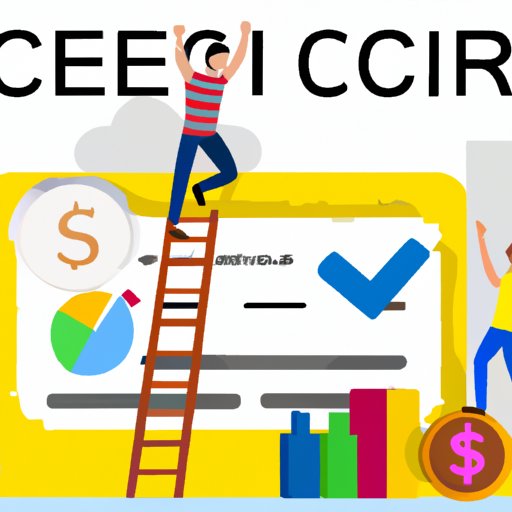
I. Introduction
For small business owners, having access to credit can be the difference between success and failure. Whether it’s to invest in new equipment, cover unexpected expenses, or take advantage of opportunities for growth, having enough cash on hand can make or break a business. In this article, we’ll explore how much business credit owners can get, the factors that determine how much credit is available, and tips for maximizing their options.
II. 5 Factors That Determine How Much Business Credit You Can Get
There are five key elements that lenders evaluate when deciding how much credit they’re willing to extend to a business. These include:
- Credit score
- Revenue
- Time in business
- Industry
- Collateral
Each of these factors plays a critical role in determining the creditworthiness of a business, and business owners should focus on maximizing their standing in each area. For example, to boost their credit score, they may need to pay down debt, dispute errors on their credit report, or make consistent, on-time payments on their bills and vendors. To increase revenue, they could explore new marketing channels, expand their product lines, or invest in more effective sales strategies. For business owners just starting out, building up their time in business and investing in collateral can be a winning approach.
III. Pros and Cons of Different Business Credit Options
Once you’ve determined how much credit is available, there are several different options for accessing it. These include:
- Traditional loans
- Merchant cash advances
- Lines of credit
- Credit cards
Each of these options has its own benefits and drawbacks, depending on the needs of the business. For example, traditional loans may offer lower interest rates and more time to repay, but can be harder to qualify for and may require extensive paperwork and documentation. Merchant cash advances, on the other hand, can offer quick access to cash, but at the cost of higher fees and more frequent repayments. Lines of credit and credit cards can be useful for covering short-term expenses or managing cash flow, but can also come with high interest rates and fees.
IV. How to Improve Your Chances of Getting Approved for More Business Credit
If you’re looking to secure additional credit for your business, there are several steps you can take to improve your chances of getting approved. These include:
- Paying down existing debt
- Boosting your credit score
- Providing financial projections or other evidence of future growth to lenders
- Exploring alternative collateral options, such as accounts receivable or inventory
By taking these steps, you demonstrate to lenders that you’re a low-risk borrower who is committed to responsible financial management.
V. What to Do When You Need More Business Credit Than You Can Get
In some cases, businesses may need more credit than they’re able to secure through traditional lenders. In these situations, alternative funding options like crowdfunding, angel investors, or partnerships with other businesses can offer a critical lifeline. Each of these options has its own benefits and drawbacks, and business owners should carefully evaluate which one is the best fit for their needs.
VI. Maximizing Your Business Credit: Strategies for Growth and Expansion
Once you’ve secured enough credit to fund your current operations, it’s important to use that capital wisely to drive growth and expansion. Some strategies for maximizing the impact of your business credit include:
- Investing in marketing and advertising to attract new customers
- Expanding your product lines or services to meet changing customer needs
- Strengthening your infrastructure to support future growth
- Managing your debt carefully to minimize interest costs and improve your standing with lenders
By taking a smart, strategic approach to using your business credit, you can create a strong foundation for long-term success.
VII. Conclusion
Accessing credit is a critical component of running a successful small business. By understanding how much credit is available and how to maximize your standing in the eyes of lenders, you can give yourself the best chance of securing the funding you need to grow and thrive. Diligent financial management, careful evaluation of your options, and a commitment to responsible credit use can help you build a business that will stand the test of time.




